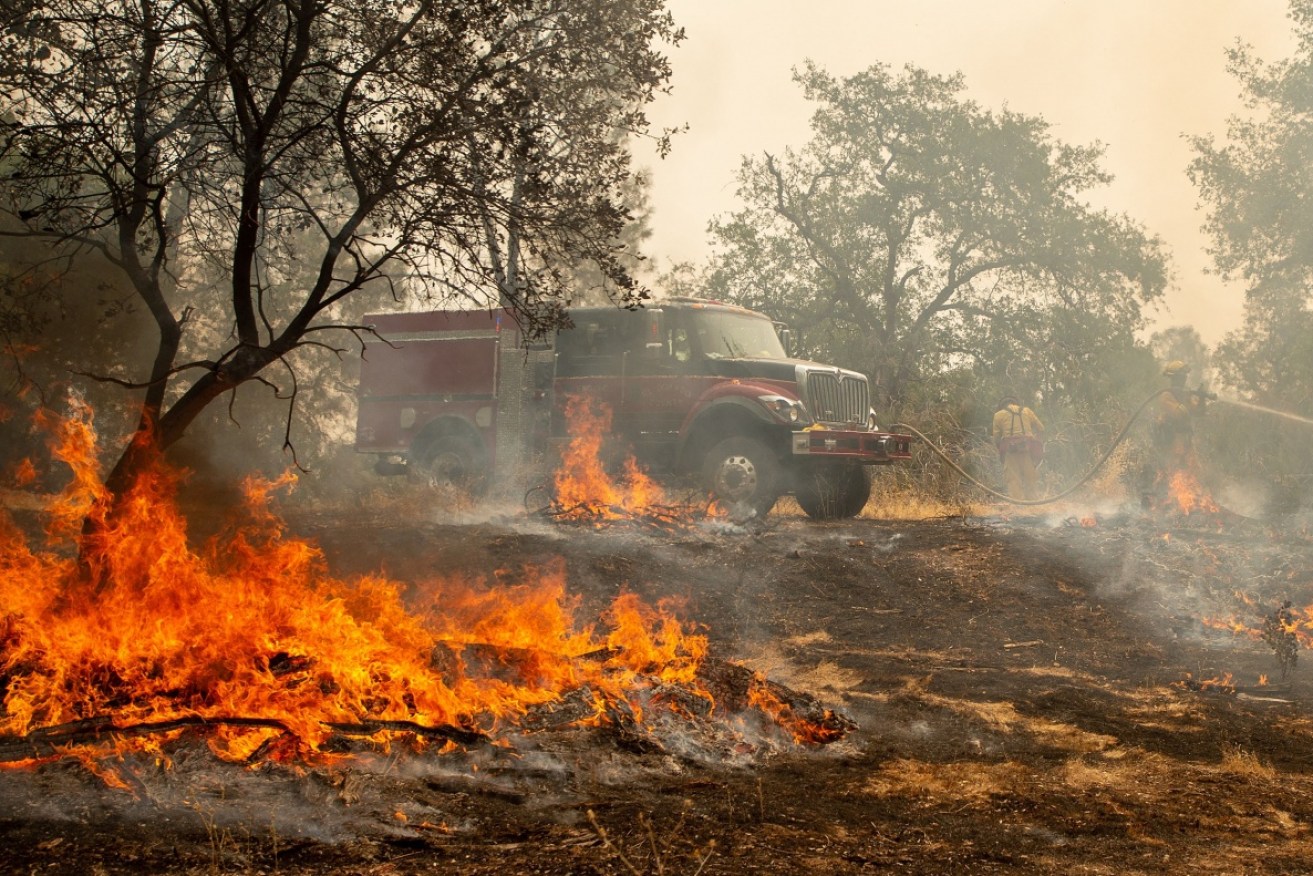Extreme measures: The heat is on … once again


A series of deadly wildfires have killed six people and destroyed hundreds of buildings in California. Photo: AFP/Getty
Greece and California on fire and people are dying once again. Japan suffers the worst flooding and landslide in decades, followed by a heatwave. The Arctic has wilted under 30 degrees Celsius temperatures. Armenia has broiled under temperatures 9 degrees Celsius above average. The World Meteorological Organisation says 2018 will be one of the hottest on record.
Heard it all before?
Australia has just finished its hottest financial year on record for day-time temperatures. The year was 1.46 degrees Celsius above the average over the 1961-1990 baseline period, and more than 0.1 degrees Celsius warmer than the previous financial-year record (2015-16).
With night-time temperatures above average, but not extreme, the 2017-18 financial year was the second hottest overall.
April was Australia’s warmest on record for mean maximum temperatures, according to Bureau of Meteorology (BOM) data. And it was the driest April in a decade. This was autumn, and there were fire bans.
Meanwhile, farmers in Queensland and western NSW are on the verge of panic over a drought that is spreading from the inland like a fungus.
With so much going on in the news, the drought has failed to capture the public imagination despite the fact that the NSW government has so far spent more than $1 billion in assistance.

Harry Taylor plays on the dust bowl his family farm has become at Coonabarabran during the drought. Photo: Getty
According to BOM climatologist Robert Smalley, 2018 is shaping up to be in the top-five hottest years on record.
Mr Smalley said a six-month lead time was too long for a more accurate prediction, “and a lot can happen in that time. But the outlook does indicate above-average temperatures for the next three months for large parts of eastern Australia”.
The following three months would reveal if we were heading into an El Nino – a drought-causing warming of tropical water that will further dry out the dustbowls in progress.
Mr Smalley said the chance of an El Nino occurring this year stands at 50 per cent, double the average risk rate.
Five out of eight climate models predict an El Nino occurring in the southern spring. Another predicts it to hit in December. The BOM is on Watch alert.
The climate sceptics say that Australia has always been a country of violent and extreme mood swings, weather-wise.
Droughts, floods, southerly chills and heatwaves and fires are simply part of Australia’s history and identity. What’s going on now is nothing new.
The weather records being set today are measured against records that only go back to the 19th century. So who is to say that things weren’t frequently hotter and drier and wetter and windier?

Jess and Robert Taylor feed lambs orphaned in the drought in the Central Western region of New South Wales. Photo: Getty
Last November, University of Melbourne researchers published a paper that suggests the current droughts are worse than any in 800 years.
The study used an extensive network of “tree rings, ice cores, corals and sediment records from across Australia and the adjacent Indian and Pacific Oceans to extend rainfall records across all of the major regions of Australia by between 400 and 800 years”.
Reconstructing 800 years of seasonal rainfall patterns across the Australian continent, the researchers found “that parts of northern Australia are wetter than ever before, and that major droughts of the late 20th and early 21st centuries in southern Australia are likely without precedent over the past 400 years”.
The researchers included Dr Ben Henley, Research Fellow in Climate and Water Resources, and Professor Patrick Baker, ARC future fellow and professor of Silviculture and Forest Ecology.
They concluded that the Millennium Drought (1997-2009) was, as they wrote at The Conversation, “larger in area and longer than any other drought in southern Australia over the last 400 years”.









